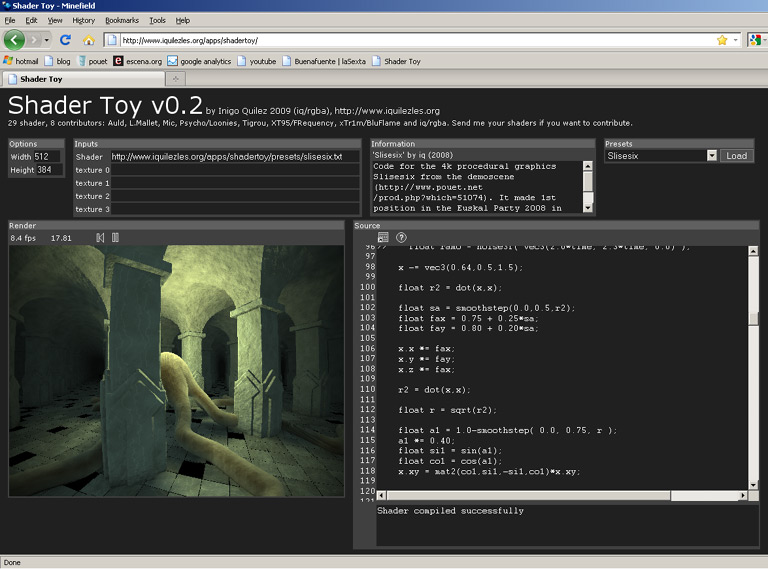So what is the core of Natal ?
- Nothing more that a 3D articulated body fitting to a point cloud ?
From my point of view I would say yes. On the following screen we could see the 3D point cloud captured by the system, and see that the camera give only good 3D point at a given distance (look to the sofa it does not appear on the back plane of the point cloud. But this point is normal. It's just an observation over the hardware elements.)
For sure they use something to check if the detected articulation movement could be possible for the human body. It's a probabilistic engine that will check which detected part are the more plausible.

Another screens :


Source : link and quoted text from the link
"Step 1: As you stand in front of the camera, it judges the distance to different points on your body. In the image on the far left, the dots show what it sees, a so-called "point cloud" representing a 3-D surface; a skeleton drawn there is simply a rudimentary guess. (The image on the top shows the image perceived by the color camera, which can be used like a webcam.)
Step 2: Then the brain guesses which parts of your body are which. It does this based on all of its experience with body poses—the experience described above. Depending on how similar your pose is to things it's seen before, Natal can be more or less confident of its guesses. In the color-coded person above [bottom center], the darkness, lightness, and size of different squares represent how certain Natal is that it knows what body-part that area belongs to. (For example, the three large red squares indicate that it’s highly probable that those parts are “left shoulder,” “left elbow” and “left knee"; as the pixels become smaller and muddier in color, such as the grayish pixels around the hands, that’s an indication that Natal is hedging its bets and isn’t very sure of its identity.)
Step 3: Then, based on the probabilities assigned to different areas, Natal comes up with all possible skeletons that could fit with those body parts. (This step isn't shown in the image above, but it looks similar to the stick-figure drawn on the left, except there are dozens of possible skeletons overlaid on each other.) It ultimately settles on the most probable one. Its reasoning here is partly based on its experience, and partly on more formal kinematics models that programmers added in.
Step 4: Once Natal has determined it has enough certainty about enough body parts to pick the most probable skeletal structure, it outputs that shape to a simplified 3D avatar [image at right]. That’s the final skeleton that will be skinned with clothes, hair, and other features and shown in the game.
Step 5: Then it does this all over again—30 times a second! As you move, the brain generates all possible skeletal structures at each frame, eventually deciding on, and outputting, the one that is most probable. This thought process takes just a few milliseconds, so there's plenty of time for the Xbox to take the info and use it to control the game."






 For microsoft a body seems to be cut in 31 recognizable part. So the technology seem to be an upgraded silhouette recognition and tracking.
For microsoft a body seems to be cut in 31 recognizable part. So the technology seem to be an upgraded silhouette recognition and tracking.